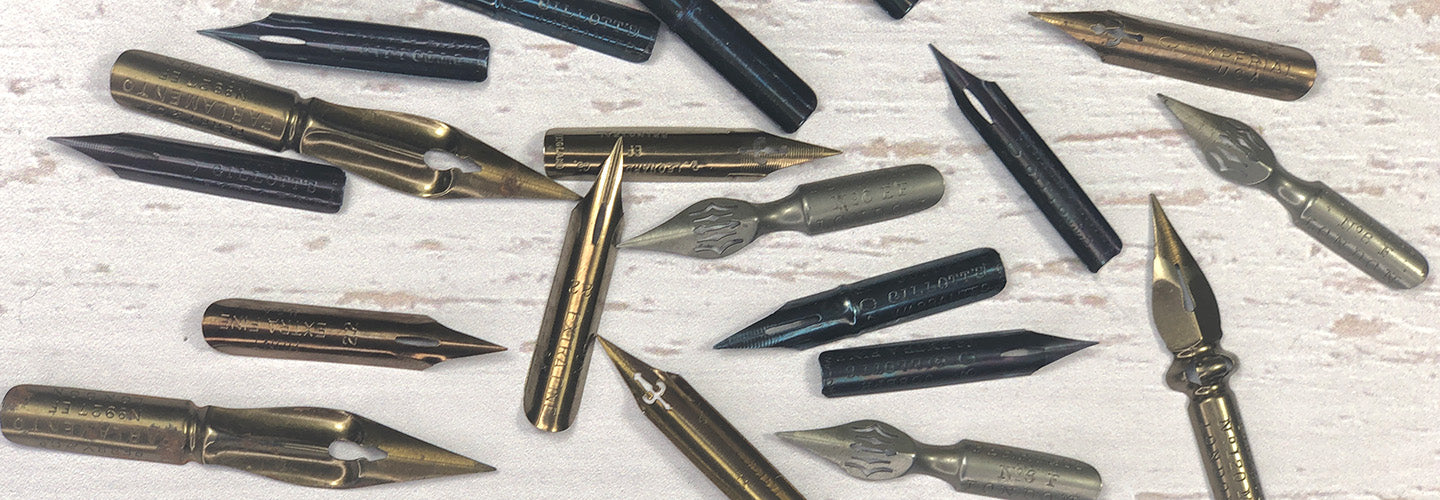
Copperplate Equipment and Materials
Specialised equipment is required for Copperplate writing.
Nibs
You need to use a pointed nib for Copperplate, which does not have a reservoir. The most commonly used nibs in the UK are probably the Leonardt Principal EF, Gillott 170, 303 and 404.Others in fairly common use are the Hunt 101 and the Brause 66EF. The Brause 66EF is extremely flexible and useful for those who have some competence in the hand, but not recommended to those who are just starting. It is also possible to buy a Mitchell Copperplate ‘elbow’ nib.Unlike the broad edged pen, the pointed nib cannot be sharpened and does not last anywhere near as long. Therefore, it is strongly advised to purchase several at a time.

Penholder
There are two choices of penholders. You can use a straight penholder that you normally use for other calligraphy styles. However, the majority of right-handed calligraphers use an oblique penholder to help deal with the steep writing angles. A straight penholder with an elbow nib or an oblique penholder with a straight nib gives the same general effect. However with an elbow holder you can try a selection of nibs, whereas with a straight holder you are stuck with the one style of nib.

If you are left handed use a straight pen holder with a straight nib. Some right-handed calligraphers also prefer a this combination, but most prefer an oblique penholder with a straight nib.
Ink
Non-waterproof inks like Higgins Eternal are suitable, but they tend to be a bit thick for Copperplate. If you use these types of ink you will probably need to water them down a little.There are two black iron gall inks, which are especially made for Copperplate. These are Walker’s Copperplate Ink and Blot’s Iron Gall Ink. Both these inks are thin and offer fine hairlines. Walker’s Copperplate Ink is a highly researched iron gall ink made to conservation standards. Initially made from a nineteenth century recipe, it is blended still further to achieve a smooth and satisfying ink.

For colour work Schmincke Calligraphy Gouache is the best although other gouaches are acceptable. These also need to be mixed thinner than they would be for normal broad pen work. For best results, mix Gouache 24 hours before it is used. This will help the ink flow.
Paper
For Copperplate writing, you need a very smooth paper. If the paper is not smooth enough the nib will catch on it. For practice ordinary layout paper can be suitable. For final pieces of work use a quality paper, these include some papers designed for ink-jet printers.
Some ‘Hot’ press papers are good. In general hand-made papers are unsuitable, as are ‘Not’ papers. You can check out our full range of Copperplate paper here.
